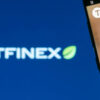
Non-fungible tokens (NFTs) have revolutionized the digital art, gaming, and collectibles industries, with platforms like Ethereum traditionally dominating the space. However, Solana, a high-performance blockchain, has rapidly emerged as a major player in the NFT market. Known for its scalability, low fees, and speed, Solana has attracted developers, creators, and investors alike, seeking a more efficient and cost-effective platform for NFT projects.
This article explores Solana’s impact on the NFT market, its key benefits for creators and users, notable NFT applications, and the future of Solana in the fast-evolving NFT ecosystem.
Why Solana is Ideal for NFTs
Solana’s unique characteristics make it highly appealing for NFT projects, especially when compared to Ethereum, which has faced challenges like high gas fees and network congestion. Here are some key reasons why Solana is making waves in the NFT space:
1. Low Transaction Fees
One of the most significant advantages of Solana over Ethereum is its extremely low transaction fees. On Solana, users can mint, buy, and sell NFTs for a fraction of the cost, with fees typically less than $0.01 per transaction. In contrast, Ethereum’s gas fees can reach hundreds of dollars during periods of high network activity. This makes Solana more accessible to creators and collectors, particularly those new to the NFT world or working with smaller budgets.
2. High Throughput and Scalability
Solana’s blockchain can process up to 65,000 transactions per second (TPS), making it one of the fastest blockchains in the industry. This high throughput ensures that users experience smooth and instantaneous transactions, even during peak times. For NFT markets, which often handle a high volume of transactions during drops or auctions, Solana’s scalability is a game-changer.
3. Proof of History (PoH)
Solana’s Proof of History (PoH) consensus mechanism ensures efficient and reliable time-stamping of transactions, further boosting the network’s speed. For NFT marketplaces that require precise execution of transactions (such as minting new NFTs or bidding in auctions), Solana’s PoH mechanism ensures fairness and accuracy.
4. Environmental Efficiency
Solana has also gained attention for its lower environmental impact compared to Proof of Work (PoW) blockchains like Ethereum. Solana’s Proof of Stake (PoS) mechanism is far more energy-efficient, appealing to environmentally conscious creators and collectors who are concerned about the ecological impact of NFTs.
Solana-Based NFT Marketplaces
Several NFT marketplaces have emerged on Solana, contributing to the growth of its NFT ecosystem. These platforms offer diverse digital assets, from digital art and music to in-game items and collectibles.
1. SolSea
SolSea is one of the first and most popular NFT marketplaces built on Solana. Known for its user-friendly interface, SolSea allows artists to mint and sell their NFTs while offering unique features like embedded licenses, which help creators define copyright ownership. SolSea has become a go-to platform for artists looking to enter the NFT space on Solana, thanks to its low fees and seamless minting process.
2. Magic Eden
Magic Eden is another leading Solana-based NFT marketplace, offering a wide variety of NFTs, including art, music, and collectibles. The platform is known for its simplicity, low transaction costs, and support for both creators and collectors. Magic Eden also features a launchpad service, helping new NFT projects gain visibility and traction in the market.
3. Metaplex
Metaplex allows creators to build their own NFT storefronts, offering a customizable platform for minting, selling, and distributing NFTs. This open-source protocol has attracted numerous artists, musicians, and content creators who want more control over their digital assets. Metaplex’s focus on ease of use and decentralization has made it one of the key players in Solana’s NFT ecosystem.
4. Solanart
Solanart is another prominent Solana-based NFT marketplace known for hosting some of the most valuable and high-profile NFT collections on the Solana blockchain. The platform enables artists and collectors to buy and sell NFTs with ease, and it features popular collections like Degenerate Ape Academy and Aurory.
Popular Solana NFT Collections
Several NFT collections on Solana have gained significant attention, driving interest in the network and proving that Solana can compete with Ethereum in the NFT space. Here are some of the top NFT collections on Solana:
1. Degenerate Ape Academy
Degenerate Ape Academy was one of the first major NFT collections to launch on Solana, and it quickly sold out, becoming a cultural phenomenon within the crypto community. The collection features 10,000 uniquely generated ape characters, each with distinct traits and accessories. The success of Degenerate Ape Academy helped put Solana on the map as a serious contender in the NFT world.
2. Aurory
Aurory is an NFT-based game built on Solana, where players can explore a fantasy world, collect NFTs, and engage in battles. The game’s immersive storyline and vibrant artwork have made it a hit in the Solana community. By combining NFTs with gaming, Aurory showcases the potential for NFTs beyond just digital art and collectibles.
3. SolPunks
Inspired by the iconic CryptoPunks collection on Ethereum, SolPunks brings pixelated punk-style characters to the Solana blockchain. Like its Ethereum counterpart, SolPunks has grown in popularity and value, attracting collectors who want to own a piece of Solana NFT history.
Solana’s Impact on NFT Applications Beyond Art
While Solana has made a name for itself with art and collectible NFTs, the blockchain’s low fees, high throughput, and scalability have broader applications across multiple industries.
1. Gaming
The gaming industry is a natural fit for NFTs, allowing players to own, trade, and monetize in-game assets like characters, skins, and weapons. With its high speed and low costs, Solana provides an ideal infrastructure for NFT-powered gaming ecosystems. Games like Star Atlas and Aurory are already leveraging Solana to create immersive, play-to-earn experiences where NFTs play a central role.
2. Music
Musicians are increasingly turning to NFTs as a way to monetize their work and connect with fans directly. Platforms like Metaplex enable artists to mint and sell music NFTs, allowing fans to own exclusive tracks, albums, or concert tickets. Solana’s low fees make it an attractive platform for musicians who want to avoid the high costs associated with other blockchain networks.
3. Virtual Real Estate
Virtual worlds and metaverse platforms like Portals are emerging on Solana, allowing users to buy, sell, and trade virtual real estate in the form of NFTs. As the metaverse concept gains traction, Solana’s infrastructure could play a key role in supporting the buying and selling of virtual land, goods, and services.
4. Branding and Identity
Solana NFTs also have the potential to be used for branding and digital identity. Companies can issue branded NFTs as part of marketing campaigns, while individuals may use NFTs to represent ownership of their digital identities across different platforms. The flexibility and scalability of Solana make it well-suited for these emerging use cases.
Challenges for Solana in the NFT Space
Despite Solana’s impressive performance and growing popularity in the NFT space, there are challenges that the blockchain must overcome to maintain its momentum.
1. Network Outages
In 2021 and 2022, Solana experienced several network outages, impacting its reliability. While the development team has worked to address these issues, consistent network uptime is essential for maintaining user trust and encouraging long-term adoption, especially in fast-moving NFT markets.
2. Increasing Competition
Solana faces stiff competition from other blockchains, including Ethereum, Polygon, and Binance Smart Chain, all of which have significant NFT ecosystems. As the NFT space evolves, Solana must continue to innovate and attract new projects to stay competitive.
3. Decentralization Concerns
Some critics argue that Solana’s relatively low number of validators could pose decentralization risks. If the network becomes too centralized, it could undermine the security and resilience of the blockchain, especially as it scales further.
Conclusion
Solana has had a profound impact on the NFT markets and applications, offering a more scalable, cost-effective alternative to other blockchain platforms. Its low fees, high throughput, and developer-friendly environment have made it a popular choice for artists, creators, and collectors in the fast-growing NFT space. While there are challenges ahead, Solana’s unique features position it to play a major role in the future of NFTs, not only in art and collectibles but also in gaming, music, virtual real estate, and beyond.
As Solana continues to innovate and attract new users, its role in shaping the NFT landscape will only grow, making it a blockchain to watch in the coming years.










